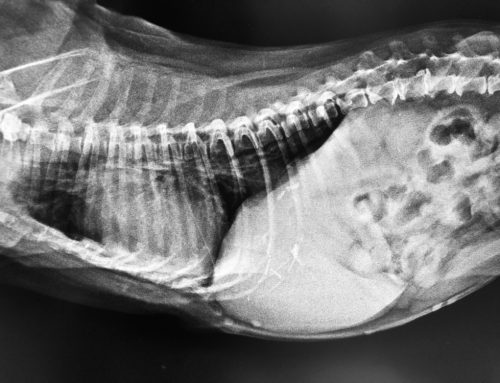You may think that since you live in Montana you don’t have to worry about heartworms, but the disease is increasingly problematic for pets across the country and can lead to life-threatening consequences for your four-legged friend. Our Billings Animal Family Hospital team wants to protect your pet’s heart and lungs from heartworms, and we provide facts behind common misconceptions about heartworm disease in pets.
Misconception: Heartworms only affect pets in warm climates.
Fact: Heartworms are transmitted by mosquitoes, so pets who live in warm, humid regions are at higher risk, but the parasites have been reported in all 50 states. According to the Companion Animal Parasite Council (CAPC), states that historically have had a low prevalence of heartworms are at increasing risk, and measures should be taken to protect pets in every state.
Misconception: My pet lives indoors so they aren’t at risk for heartworms
Fact: Mosquitoes are crafty creatures, and they can enter your home in numerous ways, including through a cracked door or window, through exhaust vents, and by sneaking in when you enter or leave your home. In addition, many indoor pets are allowed outside on balconies or enclosed patios, providing a perfect opportunity for a mosquito to target them.
Misconception: My pet only needs heartworm prevention in the summer
Fact: Mosquitoes thrive in warm weather, but “mosquito season” can fluctuate from year to year, and hibernating mosquitoes can emerge in the winter during warm snaps to infect your pet. Providing year-round heartworm prevention is the safest way to protect your pet from these parasites.
Misconception: Heartworms only affect dogs
Fact: Dogs are the pet most commonly affected by heartworms, but cats are also at risk. The disease appears differently in each species:
- Dogs — Dogs are a natural host for heartworms, which means they can mature to adulthood, mate, and produce offspring while in a dog’s heart. Wild canids, such as wolves, coyotes, and foxes, are also natural hosts and serve as a reservoir for the parasites. Once inside a dog, the parasites migrate to the vessels that supply the lungs. They typically grow to around 12 inches, and numerous worms can infect a single dog. The worms’ presence causes inflammation in the blood vessels supplying the lungs, creating a high tension area and inhibiting the heart’s ability to effectively pump blood through the body. This eventually leads to congestive heart failure.
- Cats — Cats are an atypical host for heartworms, and their immune system reacts strongly when the parasites reach the lung’s blood vessels. This causes severe inflammation that results in a condition called heartworm associated respiratory disease (HARD), which can be mistaken for feline asthma. In addition, when adult worms are present in a cat’s heart, only one or two are needed to completely obstruct blood flow.
Misconception: My pet is healthy and not affected by heartworms
Fact: Most pets don’t exhibit signs in the early stages of an infection, and in some cases, the first sign is sudden death. The condition is much easier to treat when detected early, and the only way to tell if your pet has heartworms is by testing. Current recommendations by the American Heartworm Society include:
- Dogs — Dogs over 7 months old should be tested before starting on heartworm prevention and then annually. Testing should include:
- Microfilariae testing — Microfilariae are baby heartworms that can be identified in the dog’s blood.
- Antigen testing — These tests detect proteins produced by the adult female heartworm.
- Cats — Detecting heartworms in cats is more difficult. The parasites usually don’t reach adulthood in a cat, so they may not have circulating microfilariae or female heartworm antigens. Antibody tests can detect the pet’s immune response to the parasite, and these tests, in conjunction with antigen testing, typically are recommended for cats.
Other techniques to diagnose heartworm disease include chest X-rays and an ultrasound of the heart.
Misconception: Administering heartworm prevention to my pet is too difficult
Fact: Heartworm prevention medications come in different forms to make administration easy and convenient. Options include:
- Chewables — If your pet is food-motivated, you can give them their heartworm medication as a tasty monthly treat.
- Spot-on treatments — If your pet tends to be picky, you can administer their heartworm medication as a monthly spot-on treatment.
- Injectable — If you don’t want to have to remember to give your pet their heartworm medication every month, our veterinary team can administer an injection every six or 12 months to provide protection against the parasites.
Misconception: Heartworm prevention for my pet is too expensive

Fact: Providing heartworm prevention is much less expensive than treating your pet for heartworms. Treatment is extensive, takes several months, and is risky for your pet. Medications approved for dogs are not safe for cats, and prevention is the only way to protect your feline friend from the disease. In dogs, treatment involves:
- Stabilization — Your dog’s condition must be stabilized before treatment for the parasites can begin.
- Activity restriction — Physical exertion can cause worsening damage to your pet’s heart and lungs, and their exercise must be severely restricted.
- Killing the worms — Medications are administered over several months to kill the worms at every life stage.
- Antibiotics — Heartworms harbor a bacterium that worsens a pet’s inflammatory response, and antibiotics help address the infection.
- Steroids — Steroids may be prescribed to control the inflammation caused by the worms.
- Monitoring — Your dog must be monitored closely through every treatment stage because complications, such as anaphylaxis and blood clots, can occur.
Provide year-round heartworm prevention to protect your pet from these dangerous parasites. Contact our Billings Animal Family Hospital team to discuss what heartworm prevention method is best for your pet.








Leave A Comment